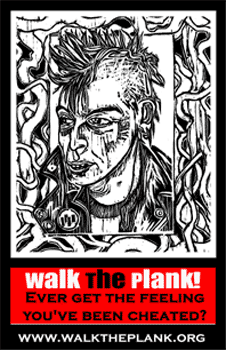Erik Farseth
A History of the Zine Movement

In the arc of an art movement, there are often two waves of activity. First
come the forerunners, whose innovations in thought or technique spur the
fledgling movement and change the way we think about art. Then come the
endless imitators that water down the movement, often to the point of ruin.
According to Erik Farseth, a local artist and historian, the
twenty-some-year-old underground zine movement is past its prime, though it
still survives. Farseth, who has written and self-published a book
chronicling these topics called Wipe Away My Eyes (which is itself in zine
format), the movement grew out of general youth disenfranchisement during
the late 1970s and early 1980s in tandem with the punk rock, leftist fringe,
and anarchist movements of the time.
According to Farseth, in late 90s, at any given time more than 10,000 zines
were published. The Twin Cities were once a hotbed of the movement, with
such titles as Profane Existence, Your Flesh, and Artpolice published here.
Still, the movement was so vast that there existed a large network of zine
enthusiasts around the world who traded favorite copies via mail. Farseth,
who has been a zine publisher locally for 12 years (of the J. Cruelty
Catalogue and Paper Scissors Clock), is surprised sometimes where his
zines turn up — he once was contacted by a guy Seattle, for instance. He also
owns a personal collection of perhaps 1,200 zines published by others from
as far away as Japan, Australia, and New Zealand.
That era is all-but-over now, though. The movement death-knell may have come
around time of the WTO-protests of 1999, during which Internet became a
driving communication force for “calls to action.” Even before then, though,
the zine aesthetic had begun to permeate our popular culture and become
almost a cliche. Magazine racks sport such titles as Bitch, Speak, and Bomb,
whose imagery and illustrations portray the tell-tale signs of the style of
zines — cheap but energetic collage images, crude xerox-quality reproductions,
hand or rudimentary lettering, a distinctive lack of legibility.
Farseth does not lament: “In the glory days of the scene, not all zines were
well written and a lot looked like crap, but they inspired people. A lot of
people have gone on to make art who wouldn’t have done it otherwise. The
do-it-yourself ideology of zines was really important.”